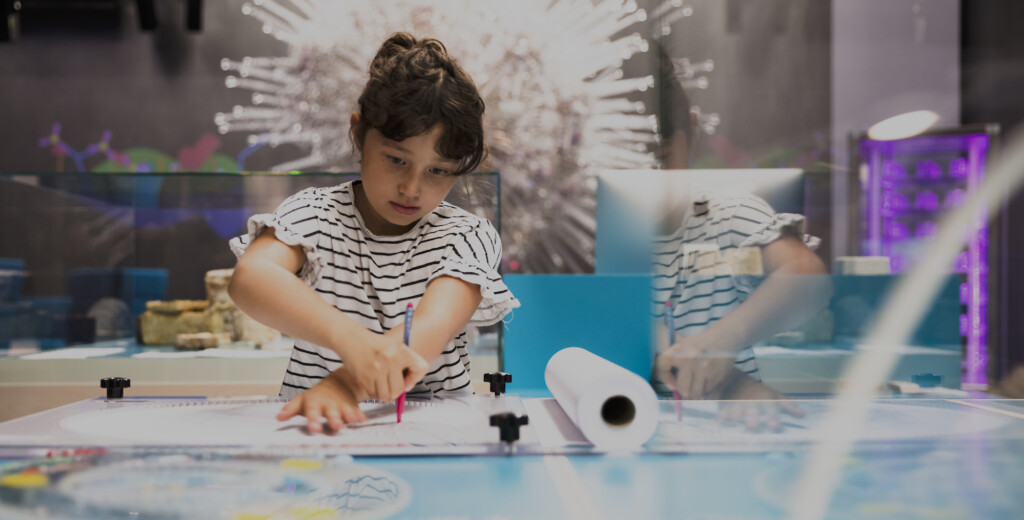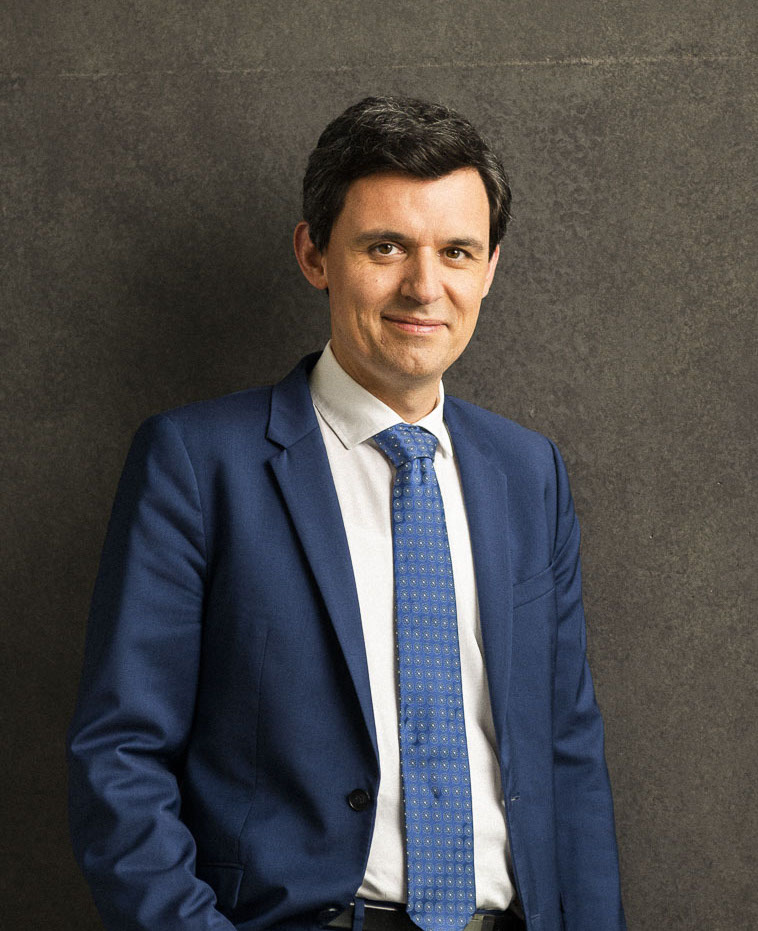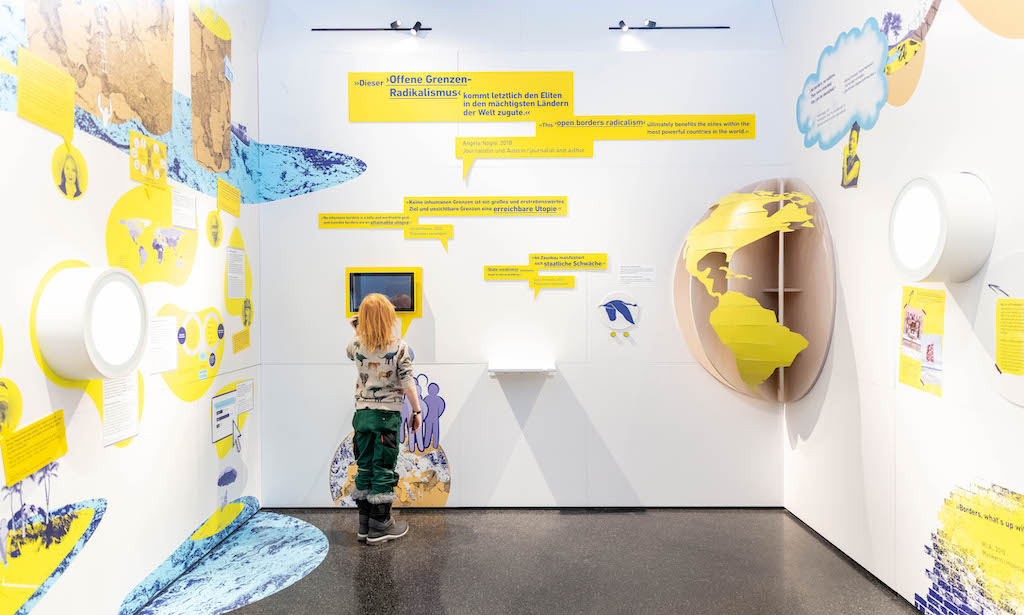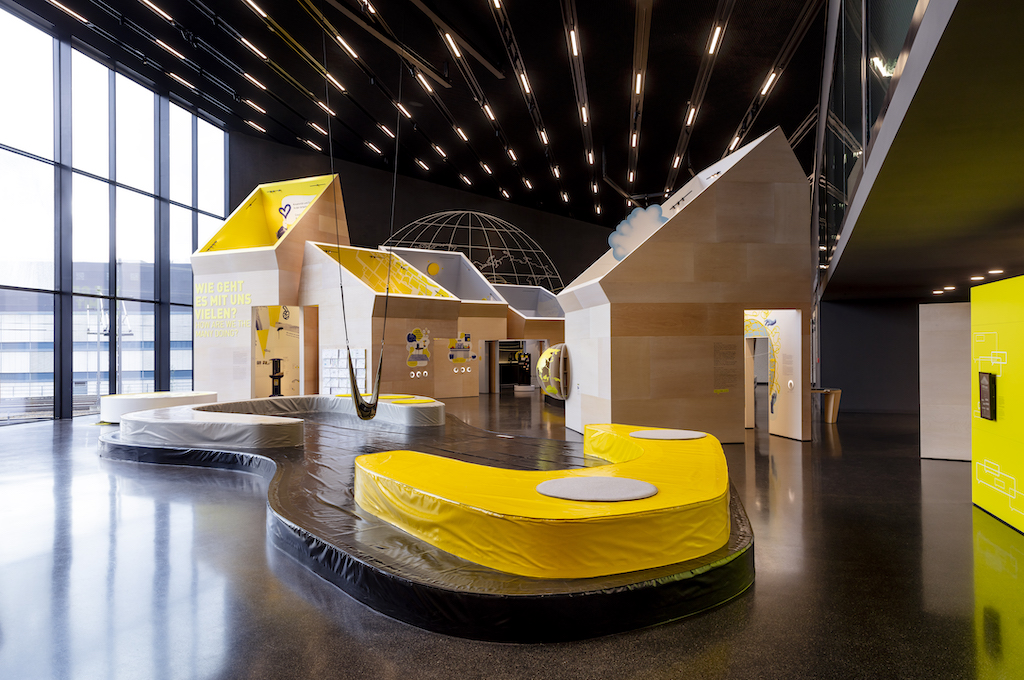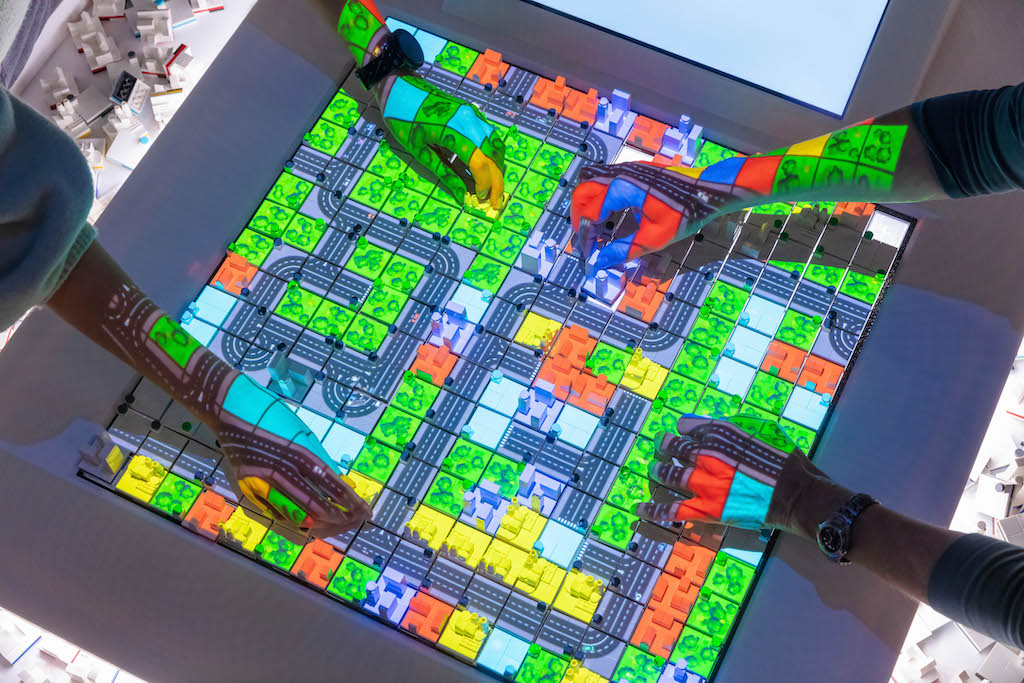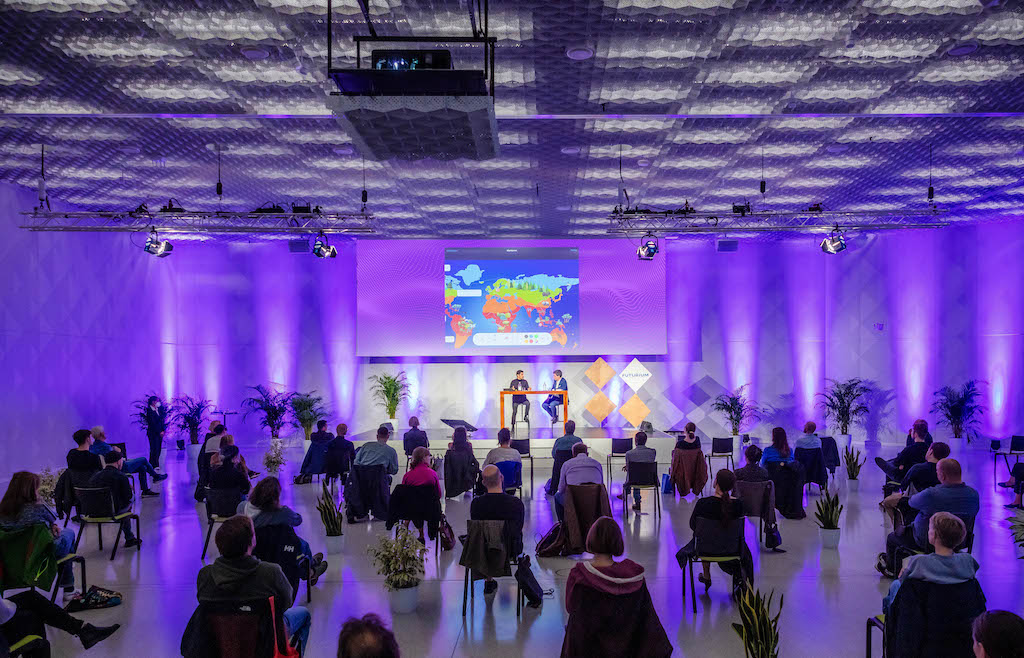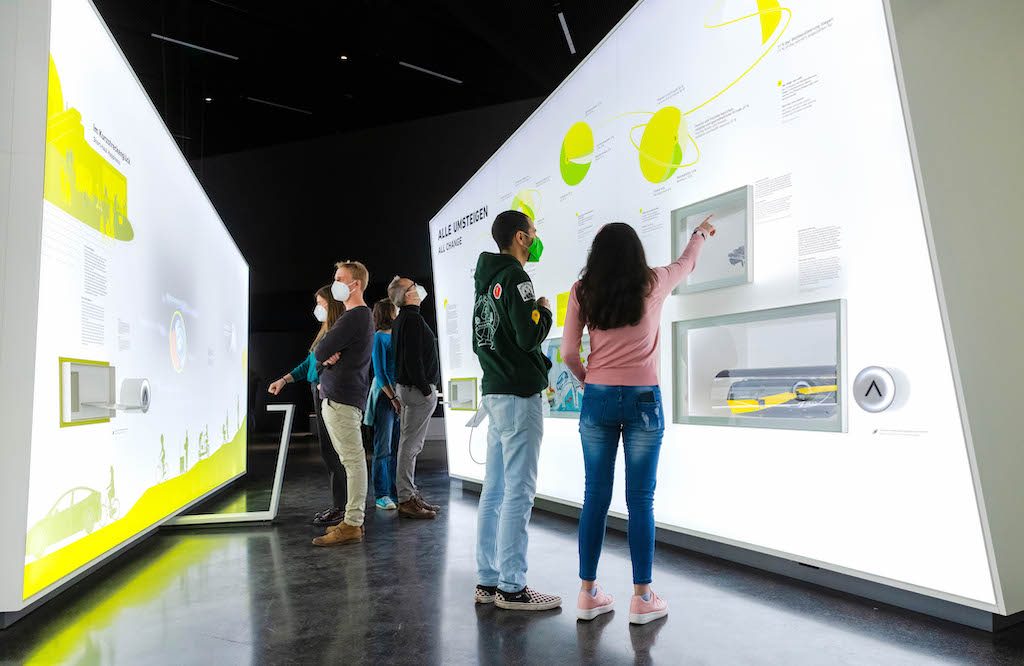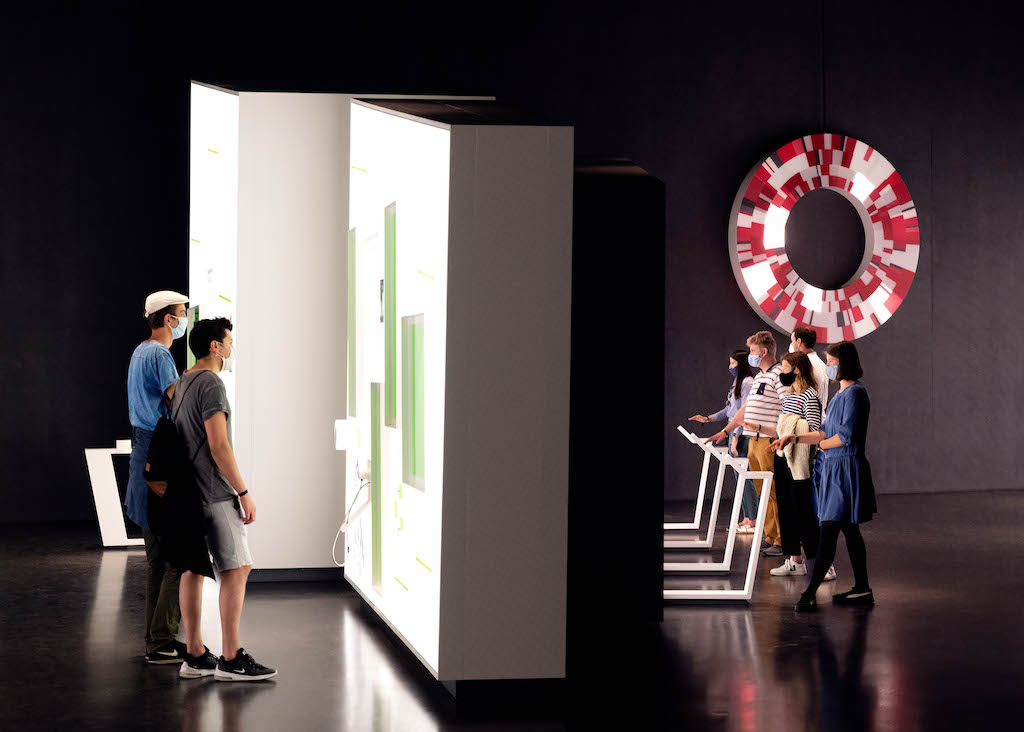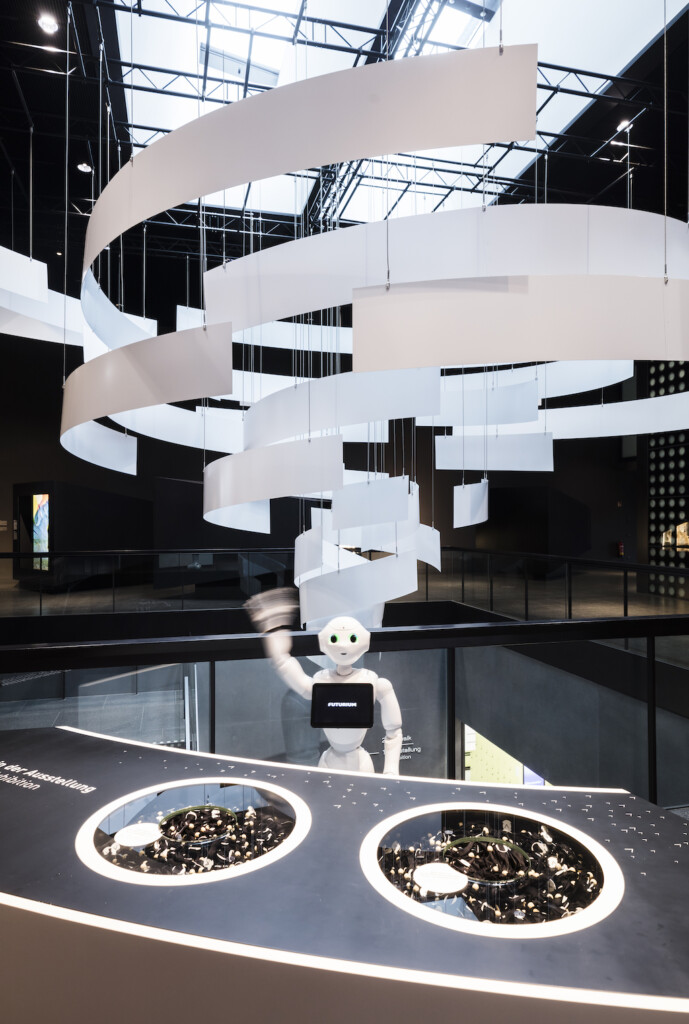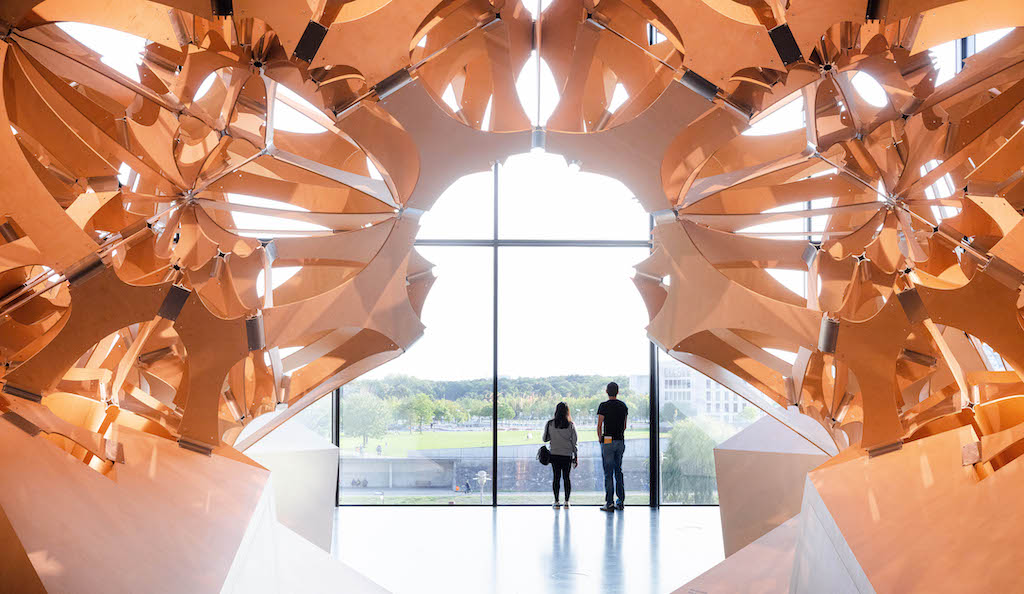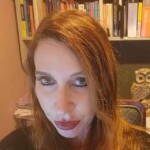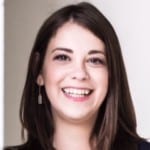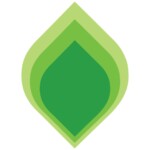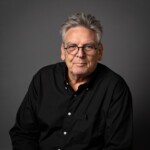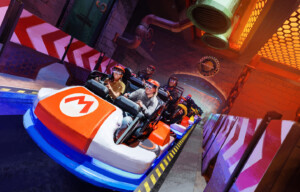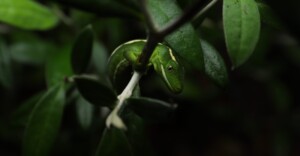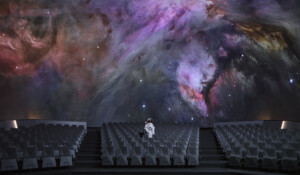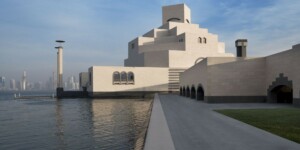The Futurium in Berlin sees itself as a ‘House of Futures’. Under one roof, it features an exhibition of the future, a laboratory of the future, and a forum of the future. It tackles the issues of the future – or possible futures – from numerous perspectives, encouraging discussion, speculation, and debate. It also serves as a meeting place for encounters between people from the spheres of science, politics, business, culture and everyday society.
Since March 2023, a thematic focus has been on the current and future challenges to and opportunities of democracy.
Since opening, more than 1.6 million visitors have engaged with Futurium’s exhibits and topics. Plus, its digital offerings have received millions of clicks. It is one of Berlin’s 10 most visited museum places and in 2021, it was honoured with the prestigious European Luigi Micheletti Award for innovative science museums.
Dr Stefan Brandt
Before leading Futurium as director, Dr Stefan Brandt was the managing director and executive board member at the art museum Hamburger Kunsthalle from 2012 to 2017. Prior to that, from 2004 to 2012, he worked as a management consultant in Vienna and Zurich. Brandt, originally from Weimar in Thuringia, studied musicology, history and communication science. In 2004, he earned his doctorate at the University of Basel with a musicological research thesis.
He is an honorary member of the executive board of the Liz Mohn Foundation for Culture and Music. This supports initiatives for the promotion of cultural education throughout Germany. Since 2020, he has served as a member of the steering committee of the international network of futures-oriented museums FORMS (Futures-Oriented Museum Synergies), in which future-oriented public institutions from around the globe – such as the Museu do Amanhã in Rio de Janeiro and the Museum of the Future in Dubai – participate.
He is a member of the steering committee of “#FactoryWisskomm2”, an initiative by the Federal Ministry of Education and Research. Since October 2022, he has been a member of the expert council of the Climate Change Centre (CCC) Berlin Brandenburg. Institutions such as Technische Universität Berlin, the university hospital Charité – Universitätsmedizin Berlin, the Berlin University of the Arts, the University of Potsdam, and the Potsdam Institute for Climate Impact Research (PIK) are also involved.
The mission behind Futurium
Futurium’s mission is to spark interest in the future and the shaping of the future.
Located in the heart of Berlin, opposite the Bundestag, the Futurium, which opened in 2019, features an exhibition, an interactive hands-on laboratory, and an event forum, offering space for exciting discussions, debate, exploration, creative workshops, interdisciplinary events and visionary ideas.
“The vision behind the Futurium is quite straightforward,” Brandt tells blooloop. “We believe there is a need for a space where you can openly discuss different options for the future. We talk about possible futures; therefore we call ourselves a House of Futures. That doesn’t imply we’re forecasting the future at Futurium; we simply present different options and approaches.
“For instance, one of them is the future of living, in terms of flats and housing, the future of nutrition, the future of health. Then there is the future of democracy, which is our new topic. We are offering scientifically based options. We draw from scientific input and give the audience the chance to reflect on and discuss the question of how we want to live.
“How we want to live is the question that we ask ourselves, and that we ask our audience.”
Encouraging open conversations
This is the central theme informing the concept of the Futurium:
“We don’t think there are many places where a dialogue as open and holistic as this can take place.
“We talk about this from the perspective of nature, as well as that of technology, and society, taking a holistic view of the future. In a nutshell, this is why we think it’s important to have places like the Futurium. We think the future should be driven by the people. We should not be overwhelmed, for instance, by technological developments like AI.”
“It is important to shape the future from the human perspective. To make people ready to shape the future, we need to help them become future literate.”
A House of the Future
The Futurium is subdivided into the exhibition, the laboratory, and the forum. Brandt explains:
“Another reason that we prefer to call ourselves a House of the Futures rather than a museum is that we are combining these three programmatic columns.”
One column is the exhibition. The exhibition has three main areas or “thinking spaces”: human society, technology, and nature.
“In each area, we present a set of options that are, from our perspective, interesting, and that could be an important part of our common future. For instance, we talk about artificial intelligence, we talk about big data, and we talk about genetic technology. We also talk about the future of democracy, the future of mobility, and about things like the circular economy. We talk about having a more sustainable economy through different types of innovation, meaning technological as well as social innovation.”
Getting hands-on
Then there is the laboratory:
“Here, we have a selection of additional objects that are, essentially, works in progress. For instance, regarding democracy, we have a focus on digital democracy. We have several objects that will grow over time. They collect data and inputs; later, there will be a new version of them. In the lab, we also have our workshop area. Here, both school classes and adults can take part in workshops based on our futures literacy toolkit.”
The third programmatic column is the forum:
“This is an open space where we hold a broad range of event formats, from classical lecture-type events to interactive settings where we connect people, scientists and regular citizens, for instance, and create a dialogue. We try to have a more unexpected, even surprising set of formats in our event space so that we are not predictable.”
FORMS
Futurium is a founding member of FORMS (Futures-Oriented Museum Synergies). This an organisation focused on promoting social experiences, supporting leadership, and encouraging best practices to inspire action for trust-driven, sustainable futures.
“FORMS is a group of 30-plus institutions worldwide, among them, for instance, the Museum of the Future in Dubai, Museu do Amanhã in Rio de Janeiro, and other houses of futures as well as scientists and futurists: thus bringing together individuals, as well as institutions. It isn’t a formalised setting. It’s more a group of people and institutions that want to push futures literacy further; they want a knowledge exchange, and to do projects together.”
One such project was the festival that Futurium hosted in conjunction with FORMS in October last year, ‘Fit for the Future with Futures Literacy’.
“We had a set of futures literacy formats and approaches from different parts of the world which were piloted at Futurium,” Brandt explains. “Around 3000 people visited the festival. It’s important for us to have this internationally connected platform, and to learn from others.”
Futurium and the movement towards future-centred museums
A focus on the future is, he contends, a growing movement:
“I think an increasing number of institutions are thinking about dedicating themselves to future topics: either existing institutions like natural history museums, or emerging institutions.
There are, he concedes, challenges when thinking about an institution devoted to the future.
“We are essentially dealing in speculation and the intangible,” he says:
“We don’t have many artefacts from the past in our exhibition. The museum must create everything from scratch, so we use a broad range of objects. Of course, we have some prototypes, but we also have art installations, video installations, and gamification. There is a lot of input to encourage imagination in our visitors. We don’t only want to inform them. Information is important, but we want to combine it with emotion. We want to create a resonance in our visitors.”
It is easy, when looking at the plight of the environment and the challenges facing the planet, to take a dark view of the future.
“This is a legitimate view on the problems we’re facing and sharing. On the other hand, I would say, who else but us could improve the situation? Only we can shape the future in a better way that can encourage sustainability.”
This outlook, he maintains, is not naïve:
“We know there are problems and challenges, and we know there are negative aspects to certain technologies. There are always shadow sides, so we want to have a reflective discussion, an adult discussion. We are realistic optimists.”
Engaging with under-served audiences
In terms of Futurium’s target audience, he comments:
“I would say we’re addressing everybody. We don’t have too narrow a focus on certain groups. I would formulate it like this. Some people are more likely to come to institutions like ours. They are interested, they are informed, they are going to come, and we don’t need to put too much effort into encouraging them. This means more effort can go into addressing people that have no academic background, or that don’t have an intrinsic interest in the topics that we are delivering.”
One of the measures taken to engage under-served audiences is free entry. Brandt explains:
“Entry will be free until at least 2025 to encourage people that either don’t have the money or that are a bit sceptical about spending money to come to a place like ours.”
The measures are successful. He adds:
“According to the comparisons and evaluations that give us these insights, the proportion of people that are not so typical, that don’t normally go to places like ours, that don’t necessarily have an academic background, is higher at Futurium than at any other museum in Berlin.”
Futurium online
Futurism also has a digital reach:
“It’s growing organically. We have around 80,000 followers on social media channels. That, at least for a museum place in Germany, is quite a good number. Our targets are much higher, however. We want to grow a lot in the next few years because we think that we have interesting and controversial topics that could be communicated effectively via a digital channel.”
In the meantime:
“Many of our formats have been transferred to the digital world. Most of our events have either been streamed or broadcast later via YouTube. We have a lot of interaction on Twitter and Instagram. We have tutorials and online classes and courses for our workshop programmes.
“It is developing step by step, but it needs a lot of manpower and womanpower because a digital dimension isn’t just about creating numbers and followers; there must be a much deeper interaction. This needs facilitation. To have digital discussions that are meaningful and fruitful, you need to put a lot of personnel and resources into the endeavour, and this is what we want to do over the next few years.”
Exploring new topics
Futurium tackles a new topic every year.
He explains:
“We opened the House of Futures in 2019. Of course, in 2020 we had the pandemic, and the House was mostly closed, but at the end of 2021, the first big update was introduced, which was the Futures of Mobility. The current one is the Futures of Democracy.”
He describes the exploration:
“We want to give a holistic view of the futures of democracy. We’re looking at the operating system of our society, at least in our part of the world. We believe democracy can deal with the big future challenges, but we also feel that democracy must change, e.g., to become more action-oriented, both in terms of having big discussions and delivering change. These points are important for many people, and sometimes they conflict with each other.
“If you want to be more inclusive but, on the other hand, more action-oriented, quicker, faster, those objectives might conflict.”
The future of Futurium
Resolving that conflict, therefore, becomes an interesting focus of discussion:
“It’s important to preserve the freedoms that are part of the concept of democracy on the one hand, and on the other hand to create the collective action we need. There’s an awful lot to discuss regarding this in the focus on democracy,” he comments:
“Next year, our topic will be natural resources, which is also a hot topic, concerned with a lot of geopolitical tensions. Sustainability is a major point: how to be more sustainable with our resources, how to think about alternative resources, about the circular economy, and so on.”
“Then, the following year, in 2025, we want to think about the future of agriculture: how can we feed the world, on the one hand, and on the other hand become more concerned with animal welfare and biodiversity? Sustainability is the thread that runs through all our topics.”
Despite three lockdowns due to the COVID-19 pandemic, Futurium has had more than 1.6 million visitors since opening in September 2019.
“Last year we had more than 500,000 visitors. This year, at the end of April, our numbers were already above 270,000, so it looks as if we will probably reach even higher numbers than last year.”
The future, in many respects, is bright.
All images credit David von Becker, unless otherwise stated
